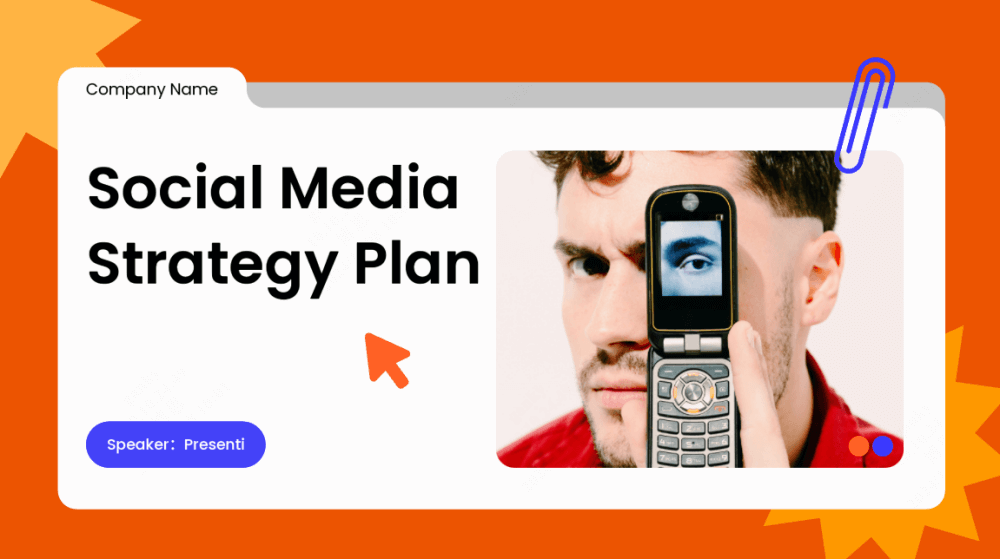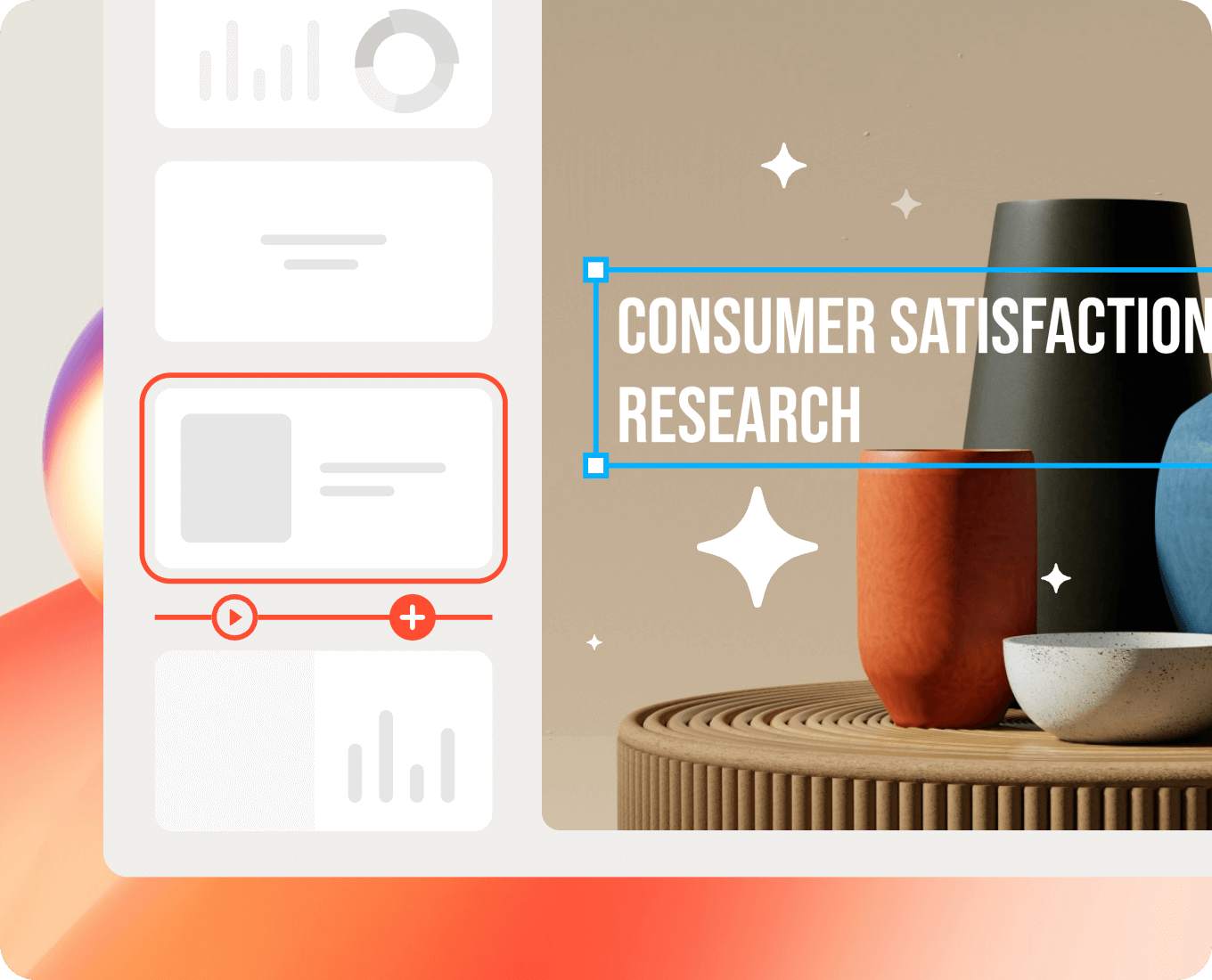Creating a Social Media Strategy Plan presentation involves outlining key components to guide a business’s social media efforts. This presentation should communicate the objectives, platforms, content, engagement tactics, and measurement methods that align with the brand’s overall goals. Below, we’ll go through each section of the presentation framework, providing insights on what to include, tips on crafting each slide, and best practices to make sure your strategy is well-communicated and actionable.
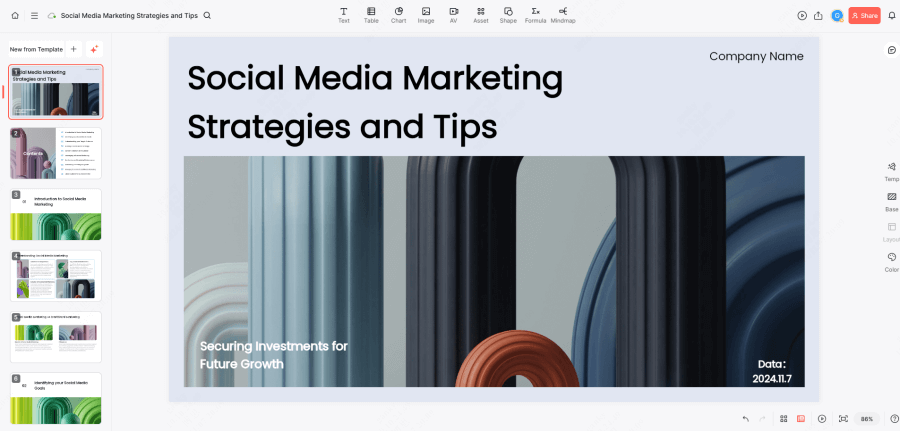
1. Introduction and Goals
This section sets the stage for your social media strategy by defining the objectives, target audience, and specific social media goals. It’s important to connect your social media strategy to your overall business goals so that stakeholders understand the impact of social media on the broader company vision.
Slide 1: Business Objectives and Alignment
Content: Briefly introduce the business objectives, such as increasing brand awareness, driving sales, or building customer loyalty. Explain how social media will support these goals.
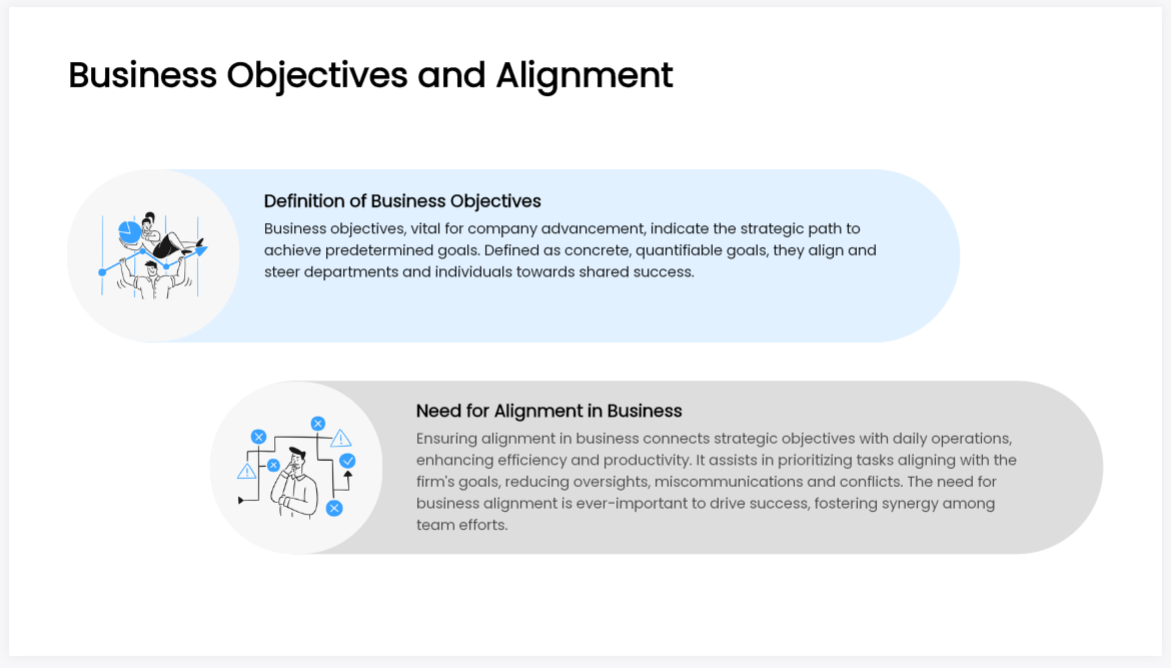
Tips: Keep this slide focused and concise. Use bullet points to highlight key business objectives and show a clear link to the social media strategy. Avoid overloading with jargon—keep it accessible for all stakeholders.
Practice: Relate social media goals to measurable business outcomes. For example, if the business objective is brand awareness, mention how social media reach and engagement will be indicators of success.
Slide 2: Target Audience Overview
Content: Describe your target audience, including demographics (age, gender, location) and psychographics (interests, online behavior). Highlight any unique characteristics that influence how they interact with social media.
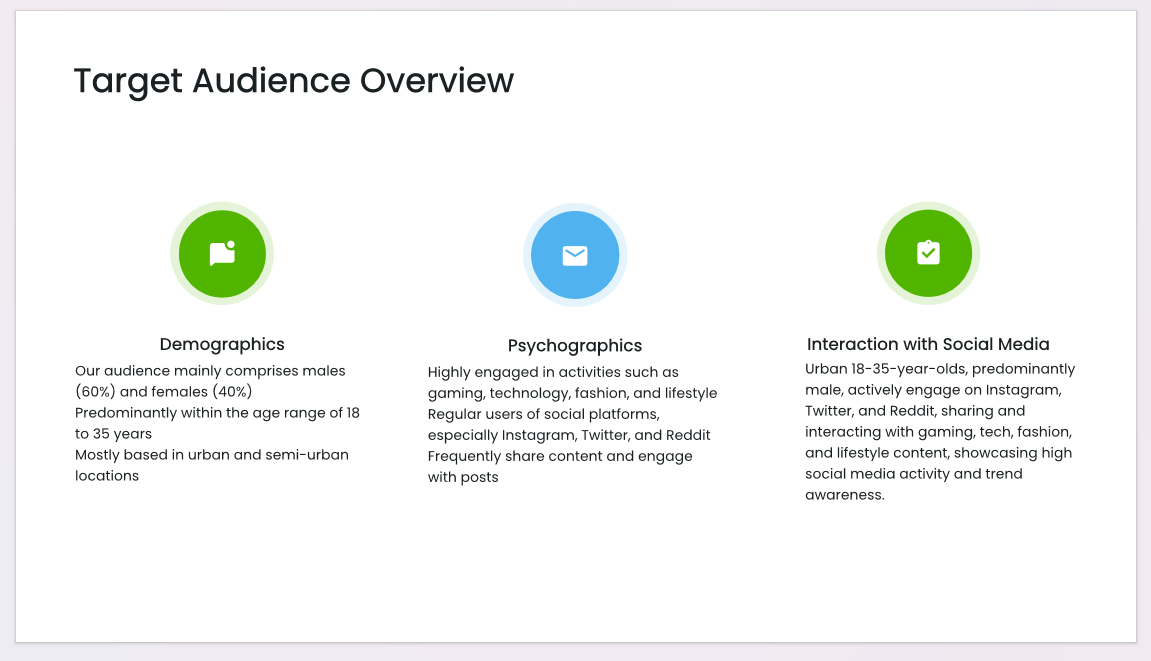
Tips: Use visuals or infographics to present audience data. This can make complex demographic information easier to understand and more engaging.
Practice: Keep it relevant to social media—focus on behaviors and preferences related to platform usage, content preferences, and engagement habits.
Slide 3: Key Social Media Goals
Content: Identify specific social media goals, such as raising brand awareness, increasing engagement, or driving conversions. Make sure these goals are aligned with the business objectives.

Tips: Use a SMART (Specific, Measurable, Achievable, Relevant, Time-bound) framework for each goal to make them clear and actionable.
Practice: Clarify how each goal will be tracked. For example, if one goal is to increase engagement, specify the metrics you’ll monitor, such as likes, shares, or comments.
2. Platform Selection
Choosing the right social media platforms is crucial to reaching your target audience effectively. In this section, outline the platforms you plan to use and why they’re relevant for your brand.
Slide 1: Platform Demographics and Relevance
Content: Present the demographics of each platform (e.g., Instagram skews younger, LinkedIn targets professionals) and explain why these platforms are appropriate for your brand.
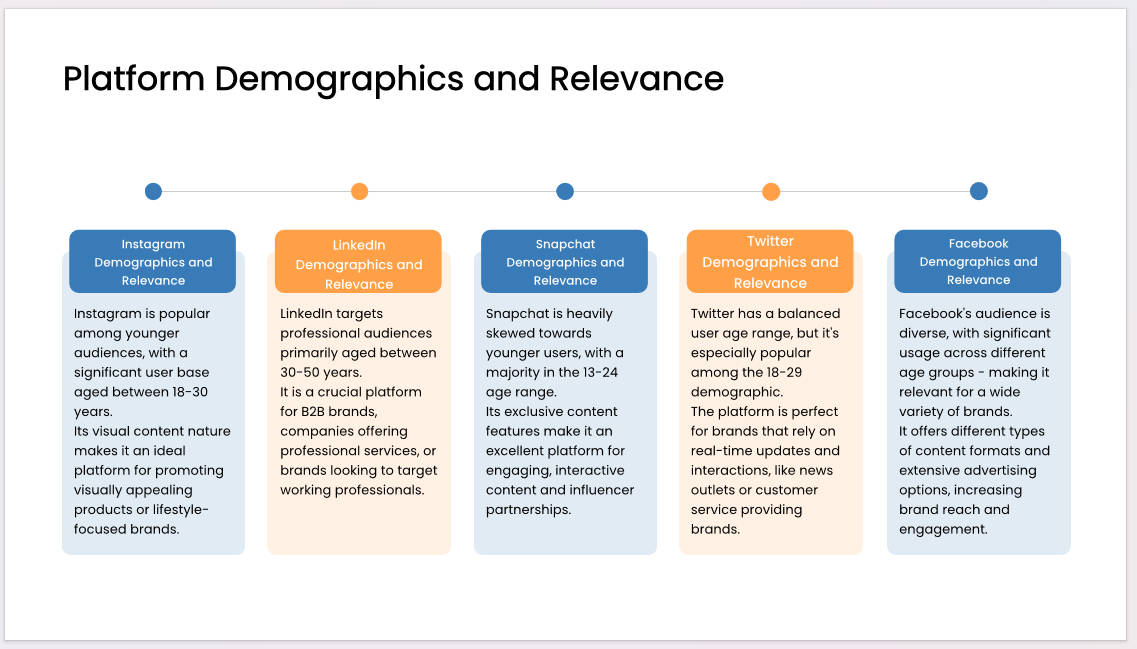
Tips: Use charts or tables to summarize platform demographics. This makes it easy for the audience to understand which platforms match the target audience.
Practice: Justify each platform choice based on your target audience’s behavior. For example, if your target audience is primarily young adults, highlight platforms like Instagram and TikTok.
Slide 2: Strengths of Each Platform for the Brand
Content: Describe the unique strengths of each platform. For example, Instagram is visual and great for brand storytelling, while LinkedIn is ideal for B2B networking.
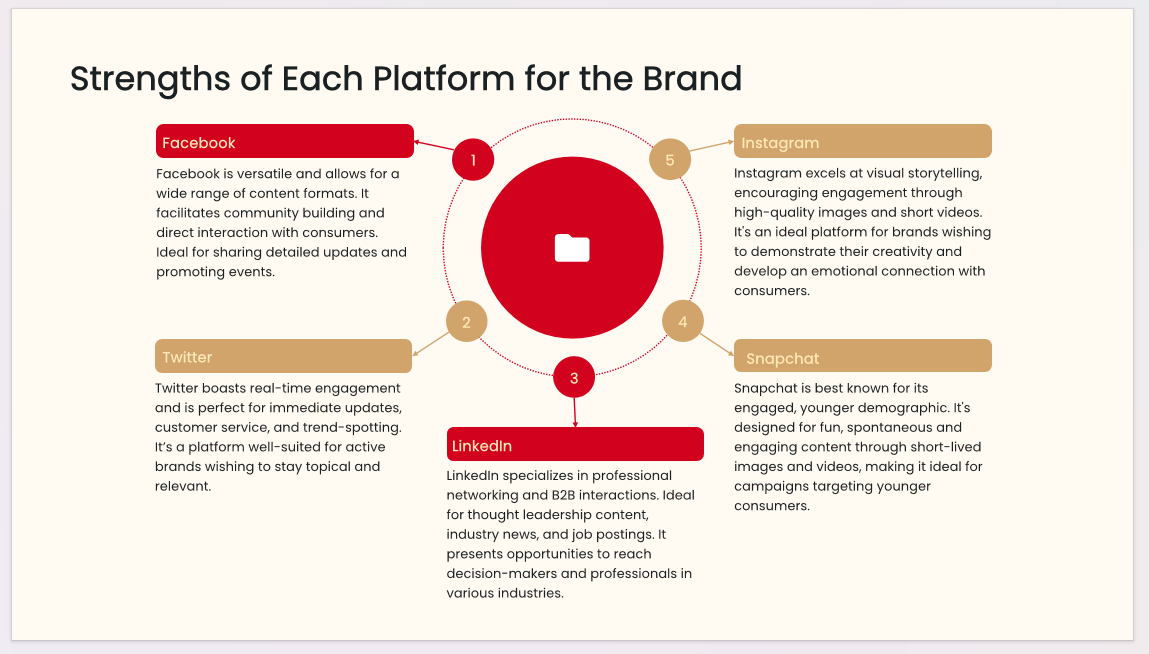
Tips: Use icons or visuals for each platform, and list the benefits in bullet points for easy readability.
Practice: Connect each platform’s strengths to your content strategy. For example, mention that Instagram will be used for sharing lifestyle content, while LinkedIn will focus on industry insights.
Slide 3: Primary vs Secondary Platforms
Content: Identify your primary platforms (where the majority of content and engagement will happen) and secondary platforms (supporting channels).
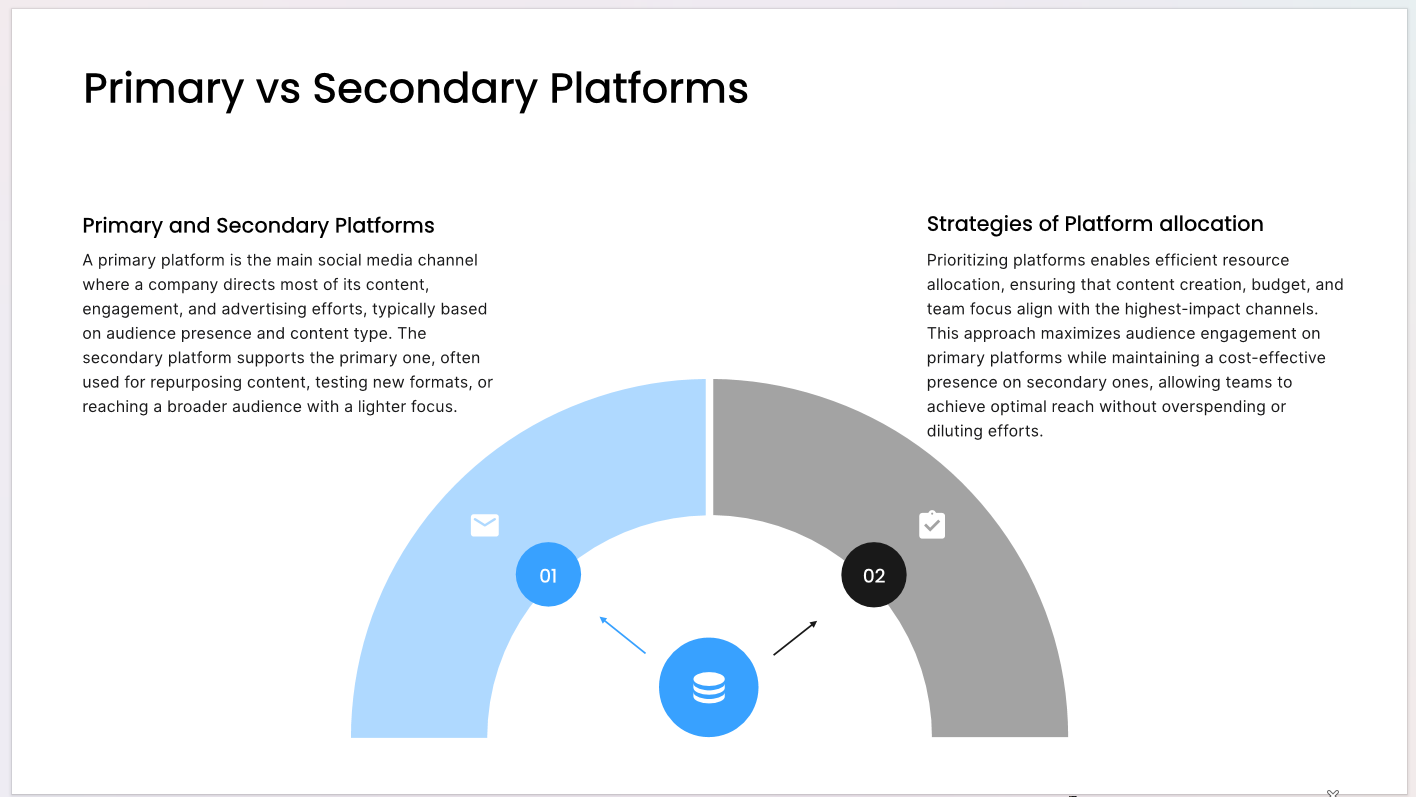
Tips: Explain why certain platforms are prioritized over others. This will help clarify resource allocation.
Practice: Emphasize consistency in messaging across all platforms, but note that primary platforms will receive more tailored, platform-specific content.
3. Content Strategy
A well-defined content strategy is essential for driving engagement. This section should cover your content themes, formats, and posting schedule.
Slide 1: Content Themes and Pillars
Content: Outline the main themes and pillars that will guide your content. For example, themes could include educational content, customer stories, and product highlights.
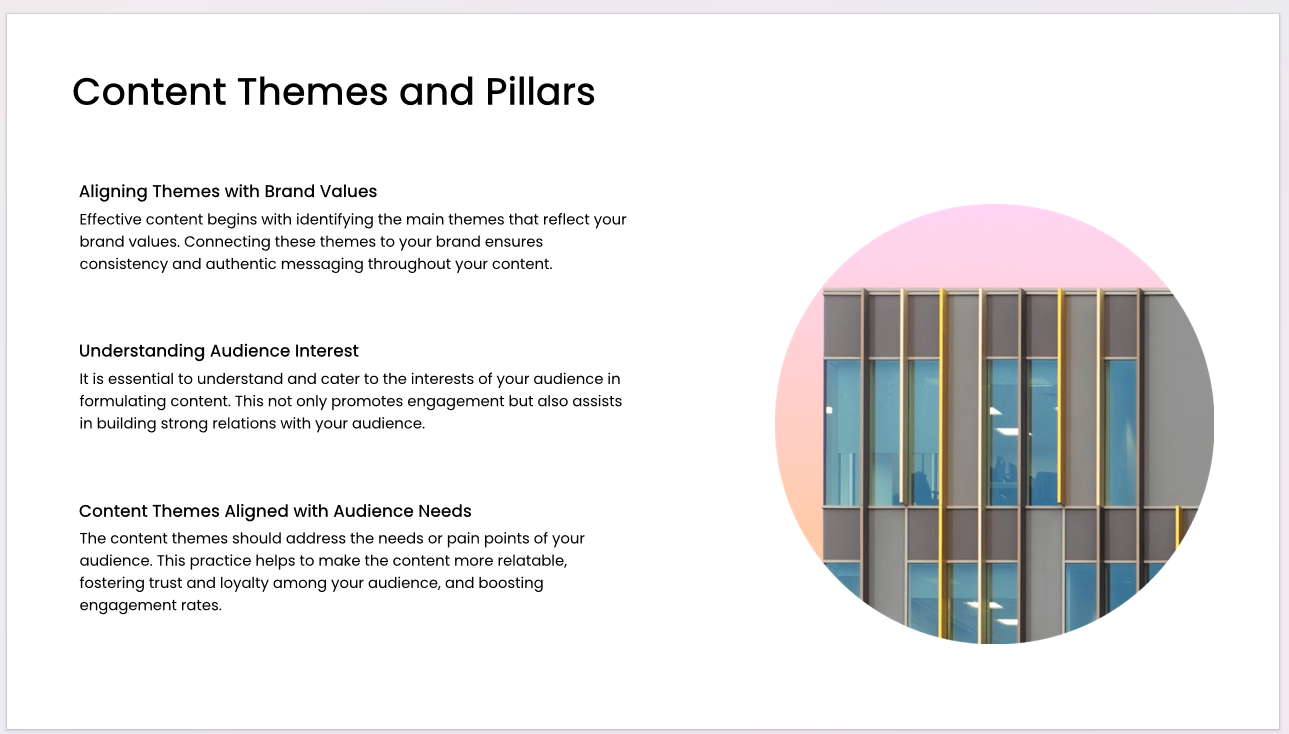
Tips: Use a visual layout, such as a grid or icons, to display each theme or pillar. Make sure they align with your brand values and audience interests.
Practice: Connect each content theme to audience needs or pain points. For example, if your audience values sustainability, consider including eco-friendly tips as a content pillar.
Slide 2: Content Formats (Video, Images, Stories, etc.)
Content: List the types of content formats you’ll use, such as videos, images, stories, or blog posts, and explain how each format fits your strategy.
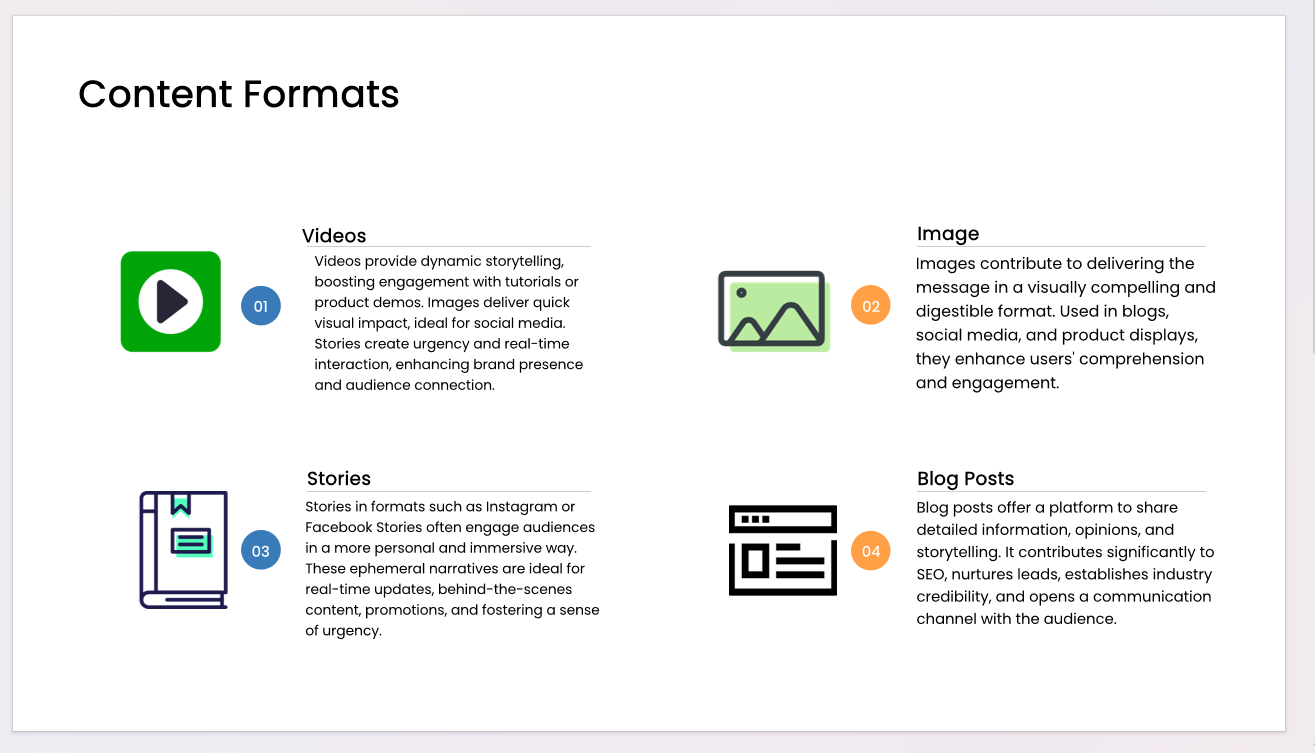
Tips: Include examples or mockups of each content type to provide a visual representation.
Practice: Emphasize variety. Using a mix of content formats keeps the feed dynamic and appealing. For instance, use video for storytelling and images for product highlights.
Slide 3: Posting Frequency and Timing
Content: Define how often you’ll post on each platform and the optimal times for reaching your audience.
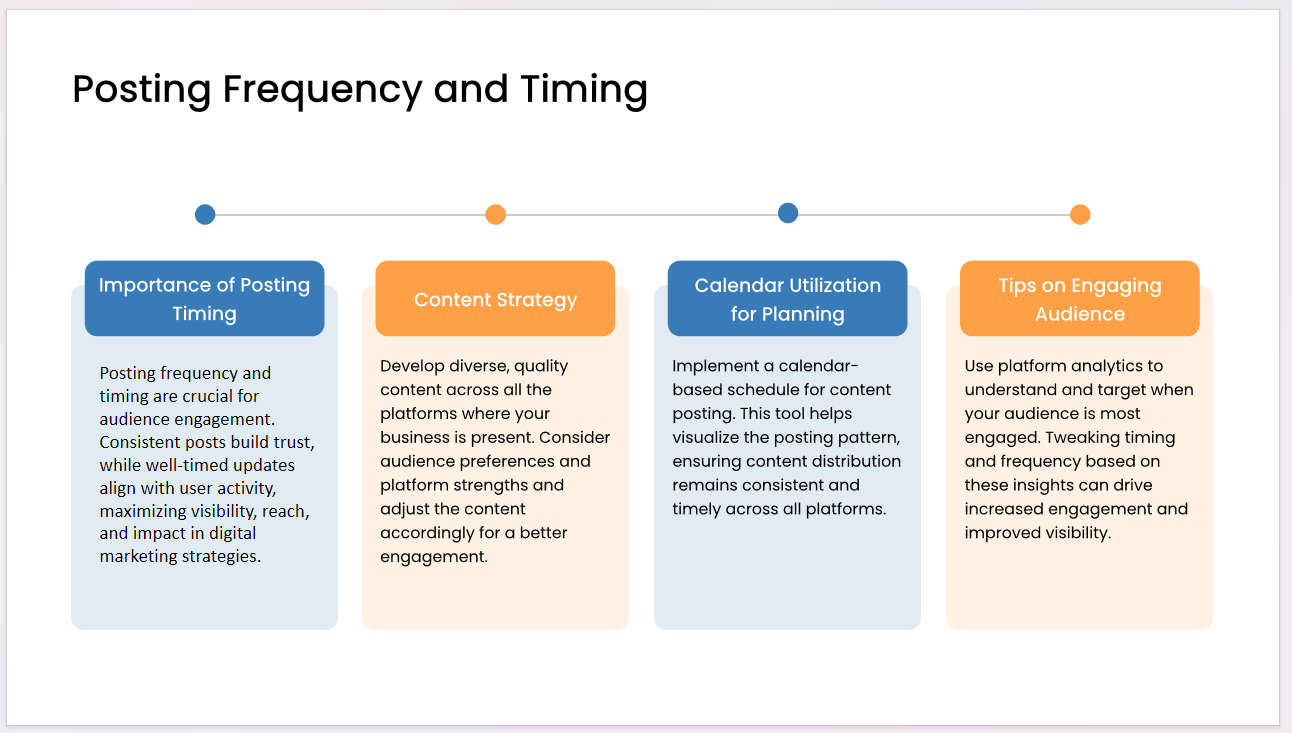
Tips: Use a calendar format to show posting frequency and timing. This provides a visual representation of consistency.
Practice: Research best practices for posting times on each platform, but also be flexible. Test and adjust based on your audience’s actual engagement patterns.
4. Engagement Tactics
Engagement is essential for building a loyal social media following. This section should cover your approach to organic and paid strategies, community management, and influencer partnerships.
Slide 1: Organic vs Paid Strategy
Content: Outline the balance between organic content (regular posts) and paid content (ads, sponsored posts). Explain when and why each approach will be used.
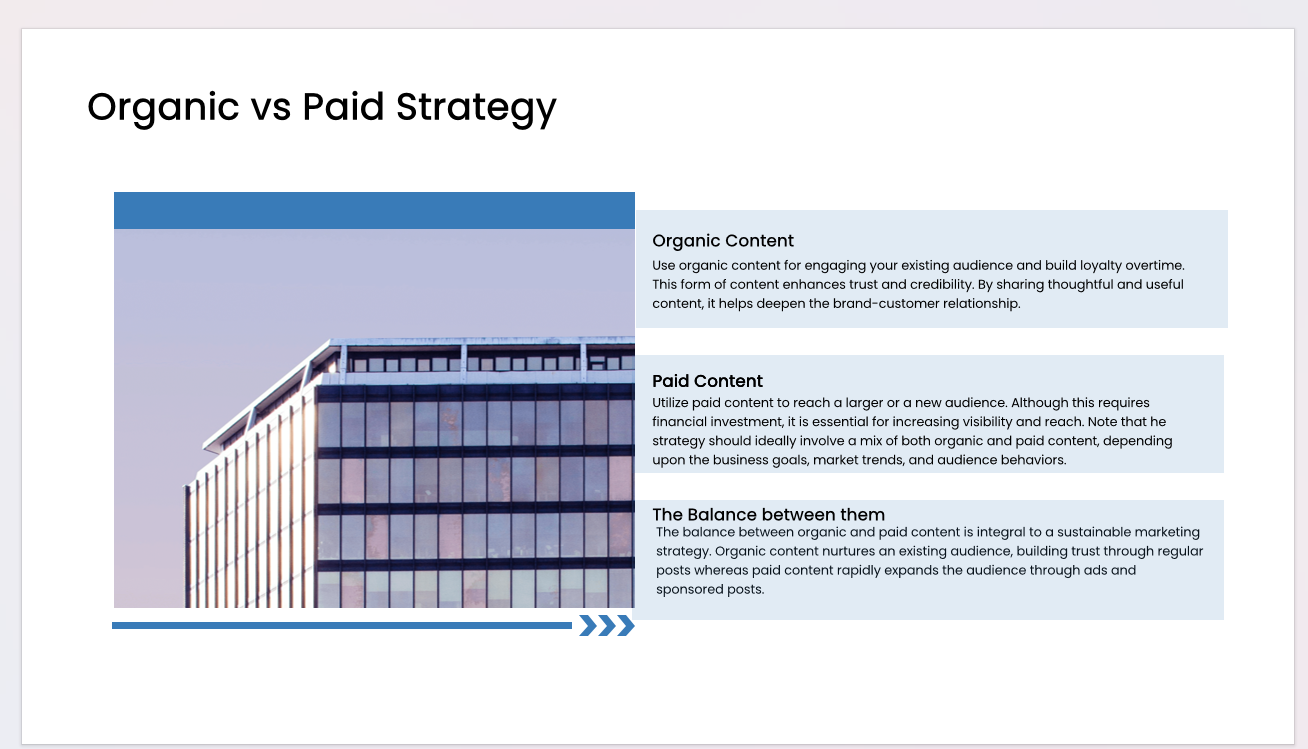
Tips: Present organic and paid strategies side by side to highlight how they complement each other.
Practice: Emphasize that organic content builds trust, while paid content increases reach. Use organic posts to nurture your existing audience and paid ads to expand it.
Slide 2: Community Management Plan
Content: Describe your approach to community management, including responding to comments, handling customer inquiries, and managing reputation.
Tips: Use bullet points to summarize key community management actions. This slide should highlight your commitment to engagement.
Practice: Set clear response times for engaging with comments and messages. For example, aim to reply to inquiries within 24 hours to maintain a positive reputation.
Slide 3: Influencer and Partnership Outreach
Content: Detail how you’ll work with influencers or brand partners to expand your reach. Specify criteria for choosing influencers and types of partnerships.
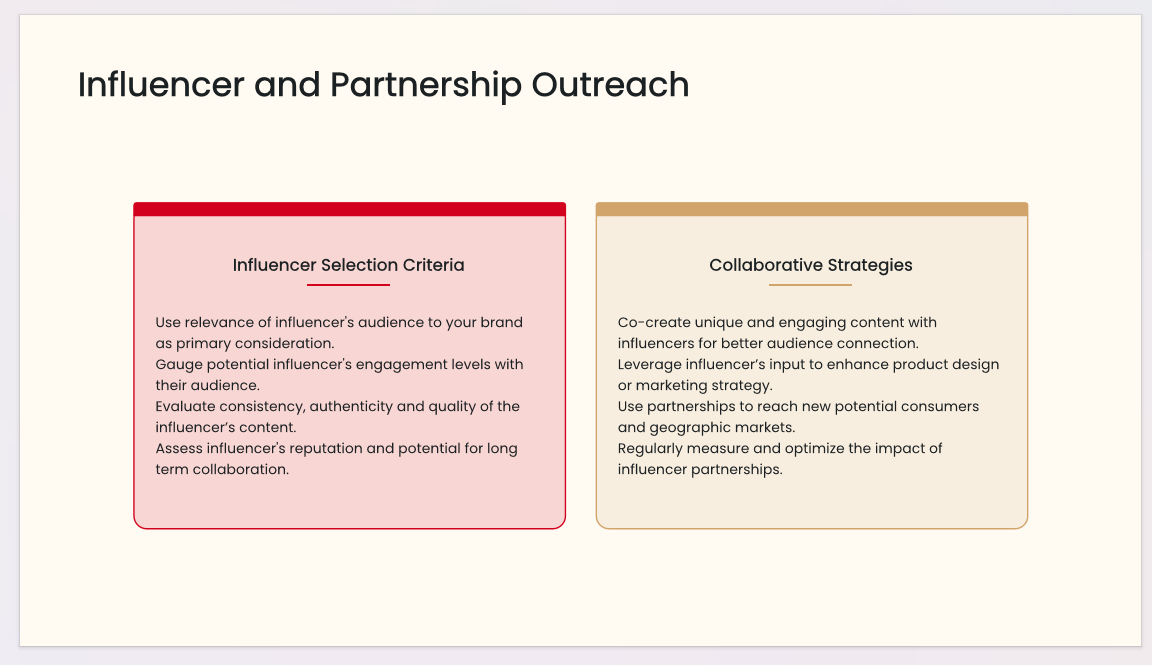
Tips: Include examples of potential influencers or brands that align with your audience.
Practice: Emphasize alignment. Choose influencers who genuinely connect with your brand values to maintain authenticity.
5. Measurement and KPIs
In this final section, describe how you’ll measure the success of your social media strategy, including key metrics, conversion tracking, and reporting practices.
Slide 1: Key Metrics (Reach, Impressions, Engagement)
Content: List the metrics you’ll track, such as reach, impressions, engagement, and follower growth. Explain why each metric matters.

Tips: Use a table or chart to display metrics for clarity. This makes it easy for the audience to understand the focus areas.
Practice: Tie metrics to your goals. For example, if a key goal is engagement, prioritize tracking likes, comments, and shares.
Slide 2: Conversion Tracking and ROI Analysis
Content: Explain how you’ll track conversions from social media (e.g., clicks to the website, sign-ups, purchases) and measure ROI.
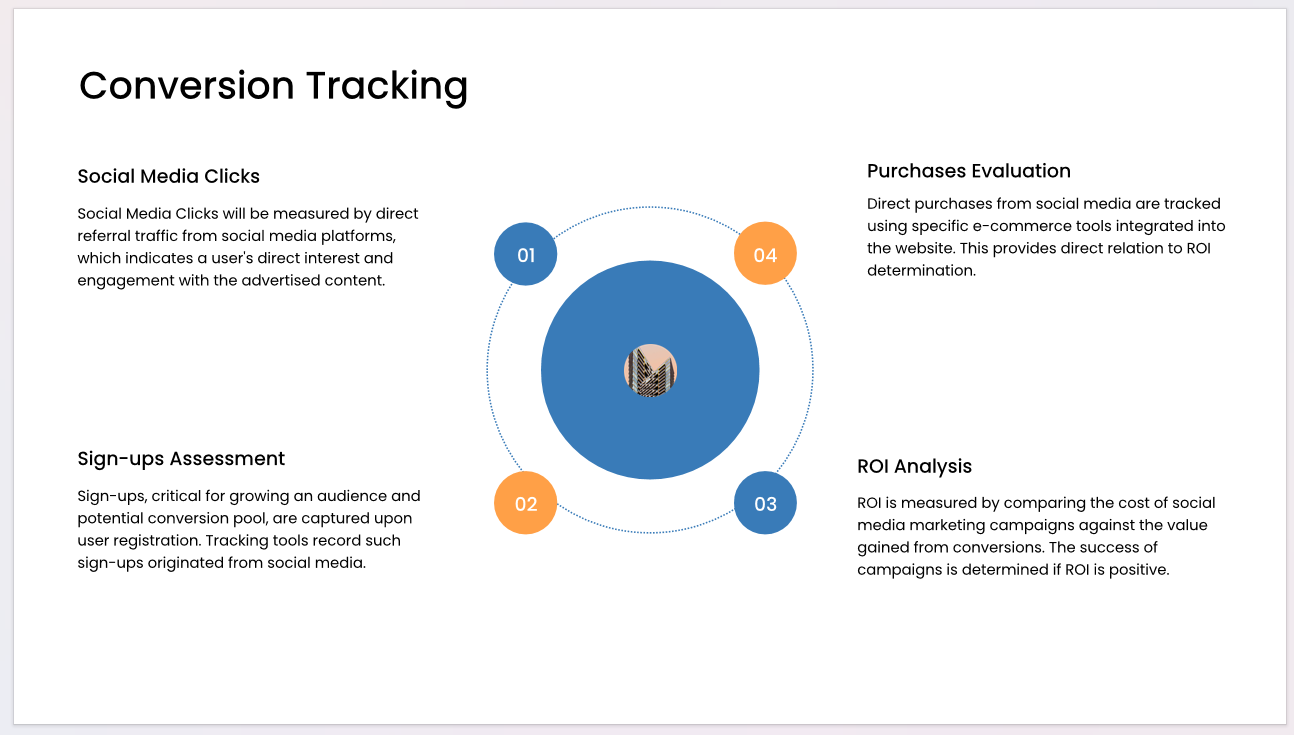
Tips: Break down conversion tracking into steps, showing tools and techniques (like UTM codes or pixels).
Practice: Connect conversions to revenue. For example, if a campaign drives product sales, emphasize the return on investment for that campaign.
Slide 3: Reporting Schedule and Tools
Content: Describe your reporting frequency (e.g., weekly, monthly) and the tools you’ll use for analysis, such as Google Analytics or Hootsuite.
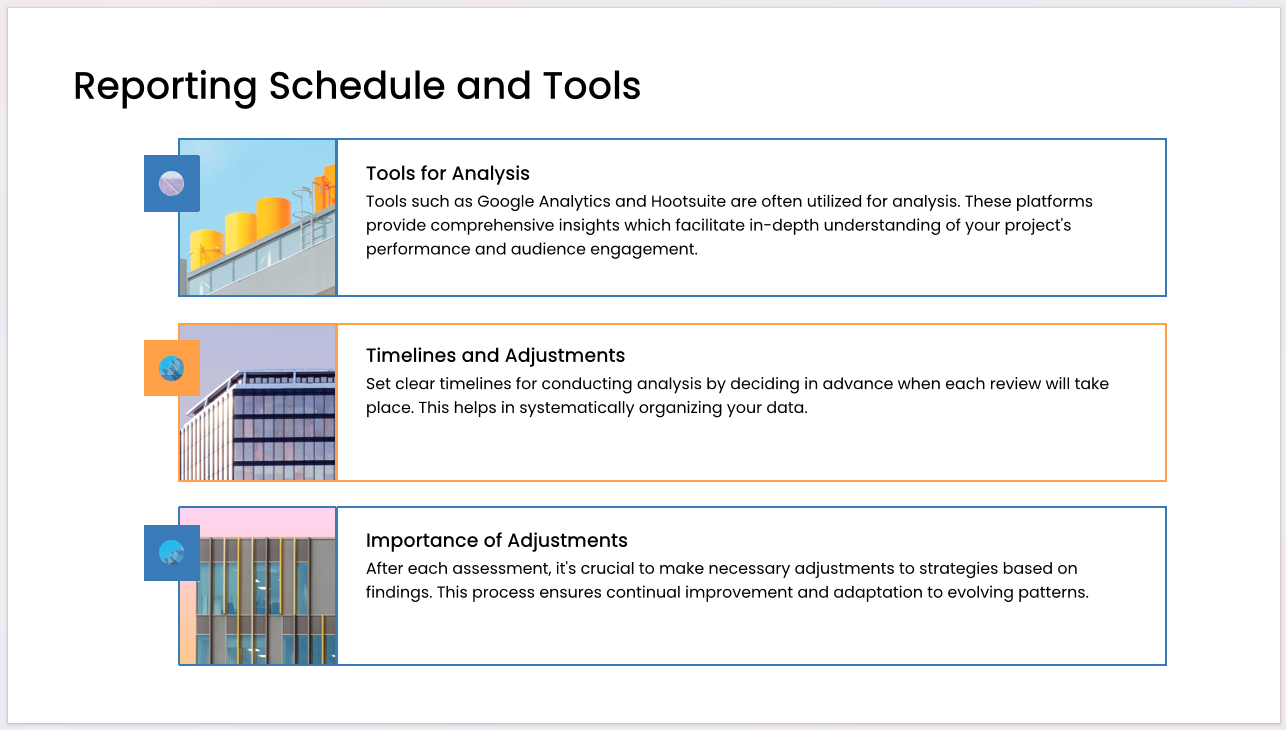
Tips: Use a calendar layout to visually show the reporting schedule, making it clear when reports are due.
Practice: Set clear timelines for analysis and adjustments. For example, review monthly reports to make informed changes to the strategy.
Conclusion
Creating a Social Media Strategy Plan presentation that’s organized, clear, and goal-oriented is key to securing buy-in from stakeholders. This guide outlines the essential sections, offering practical tips and best practices to help you effectively communicate your strategy. By covering objectives, platform choices, content strategies, engagement tactics, and measurement, you’ll set a solid foundation for a successful social media approach.
Use this structure to create a professional, engaging, and actionable social media plan that supports your business goals and connects with your audience.
